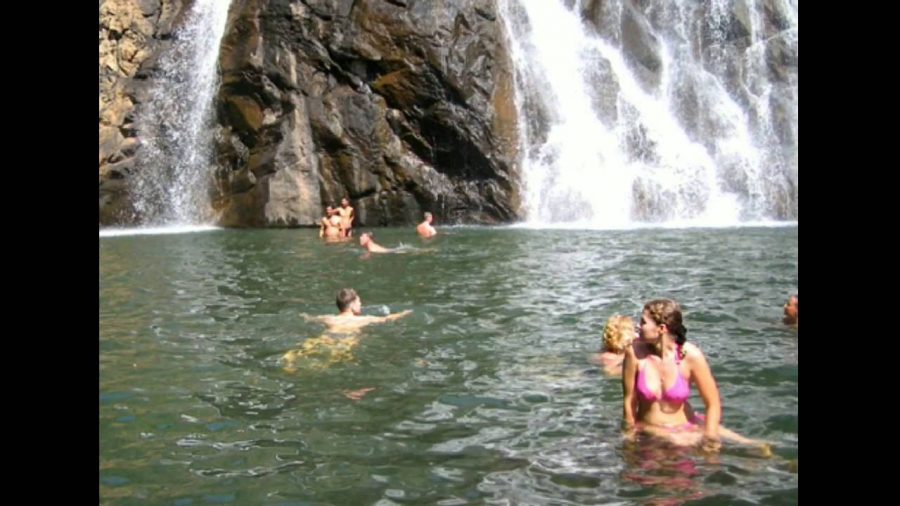Goa is a treasure trove for tourists. Despite being one of the smallest states of India, every year it attracts travel aficionados in droves from all over the world, and it is no surprise why. With its plethora of beaches, its rich historical and cultural heritage and a variety of enigmatic cuisines, Goa represent a paradise for vacation. However, one of its relatively lesser known attraction is the Aravelam waterfall and the Pandava Caves that borders the waterfall. These are some of the places that attract the people who are interested in much more than beaches. Those who are interested in visiting historical monuments and areas with natural beauty, these are perfect spots. They are on the top of the list of almost all the tourists come to this coastal state.
Read more: Top 8 Famous Beaches to Visit in Goa, Secret Beaches in Goa
Located in Bicholimtaluka in the North Goa district, the Aravalem waterfall falls short in terms of fame when compared to its South Goa cousin, Dudhsagar, but is replete with serene beauty. The Aravelam waterfall, locally also known as Haravelam or Harvale, is unique when it comes to its scenic beauty and the flora and greenery that shroud it. It is a perfect place for a day out, whether it is a long winding trek, an opportunity to click mesmerizing photographs or to have an enjoyable picnic with one’s family and friends, the Aravelam waterfall does not disappoint. What is more enchanting though is that its soothing greenery and splendor of nature that it represents, leaves everyone relaxed and rejuvenated. Some people will be content to sit in the midst of this awe-inspiring and do nothing else, for others, there is the famous Rudreshwar temple close by. However, the enchantment of the waterfall will scarcely be limited for even the temple offers a breath-taking view of this majestic waterfall.
Once one is done immersing oneself in the natural beauty of the waterfall, one can always take recourse to history and archaeology just nine kilometers away, in the Pandava Caves. The Pandava caves are so called because it is believed that the mythological heroes from the Mahabharata stayed here during their twelve-year long exile. Historically, it is stipulated that the origins of these rock-cut caves could be traced to the 6th and 7th century B.C and were possibly built by Buddhist monks owing to a large statue of the Buddha in its premises. They are very much culturally syncretic. Not only these caves house a Shiva linga, but there is also Sanskrit inscription on its walls. These caves, with their gentle darkness and slight coolness, are architecturally marvelous. They are reminiscent of Buddhist structures, with work done on laterite stone and the sanctuary and the Vihara located at the northern and southern ends respectively.
The climate of Goa is so pleasurable that it can be visited any time of the year, but the waterfall and the caves are open for only a stipulated time during the day, usually from 9 o’ clock in the morning to 5 o’clock in the evening. Hence one needs to be there to enjoy the look of the spots at its best. You can also give a visit here for more travel places games.

